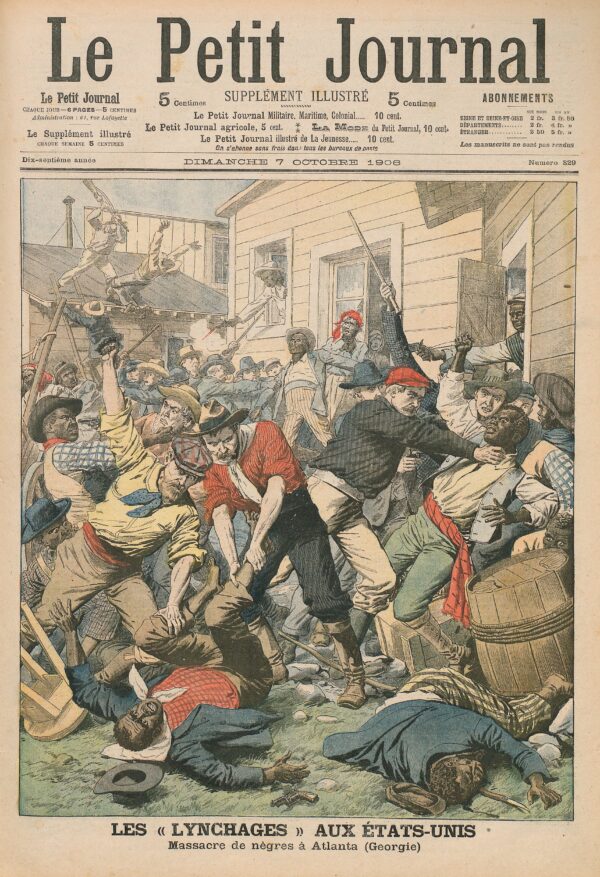
What Happened in 1906? Examining Atlanta’s Turbulent and Resilient Past
In this lesson, students will be introduced to the series of events that occurred over four days in Atlanta, Georgia in 1906 that came to be known as the Atlanta Race Massacre.

Lesson Plan
Through an exploration of the life of Japanese American activist Richard Aoki, students will examine one man’s story that is more complex than the simple binaries we often find in stories of activism.
Richard Aoki was a Japanese American soldier, civil rights activist, member of the Black Panther Party, and FBI informant. Born in 1938, Aoki’s confinement in a Utah internment camp with his family during World War II fueled his commitment to social justice. His life story provides a unique perspective of an Asian American who bridged the gap between Black American and Asian American communities and promoted solidarity against racism. His legacy, however, has been complicated by the revelation in 2012 that he was an informant for the FBI during the height of his involvement with student activism. This lesson explores how those two competing legacies can be understood as a nuanced whole.
Ninth, Tenth, Eleventh, Twelfth
Social Studies, US History
60 minutes
One 60-minute class period
Activities, Background Essay, Biographies, Glossary, Primary Sources, Rubric, Secondary Sources, Timeline
At the end of this lesson students will be able to:
It will be helpful for students to be familiar with:
SSUSH21 Analyze U.S. international and domestic policies including their influences on technological advancements and social changes during the Kennedy and Johnson administrations.
SSUSH22 Analyze U.S. international and domestic policies, including their influences on technological advancements and social changes during the Nixon, Ford, and Carter administrations.
SSCG6 Analyze the meaning and importance of each of the rights guaranteed under the Bill of Rights and how each is secured.
SSCG7 Demonstrate knowledge of civil liberties and civil rights.
L9-10RHSS1: Cite specific textual evidence to support analysis of primary and secondary sources, attending to such features as the date and origin of the information.
L9-10RHSS2: Determine the central ideas or information of a primary or secondary source; provide an accurate summary of how key events or ideas develop over the course of the text.
L11-12RHSS1: Cite specific textual evidence to support analysis of primary and secondary sources, connecting insights gained from specific details to an understanding of the text as a whole.
L11-12RHSS2: Determine the central ideas or information of a primary or secondary source; provide an accurate summary that makes clear the relationships among the key details and ideas.
A movement that emphasized black self-reliance and self-determination over integration and created political, economic, and cultural organizations through which African Americans could secure basic civil and human rights. Source: National Museum of African American History and Culture.
An executive order signed by President Franklin D. Roosevelt on February 19, 1942, during World War II. The order authorized the removal of people considered a threat to national security on the West Coast. While the order did not specify any racial or ethnic group as the perceived threat to national security, the order resulted in the incarceration of mostly Japanese Americans in “relocation centers” or internment camps. More than 100,000 men, women, and children of Japanese ancestry were relocated from their homes to camps in Arkansas, Arizona, California, Idaho, Utah, Wyoming, and Colorado. Approximately 67% of persons of Japanese ancestry interned were American citizens.
Sign in
or
create a free account
to access the full lesson plan and more.